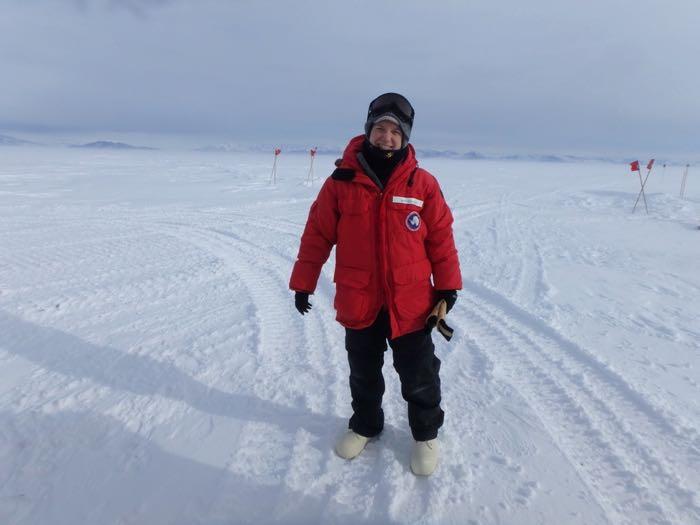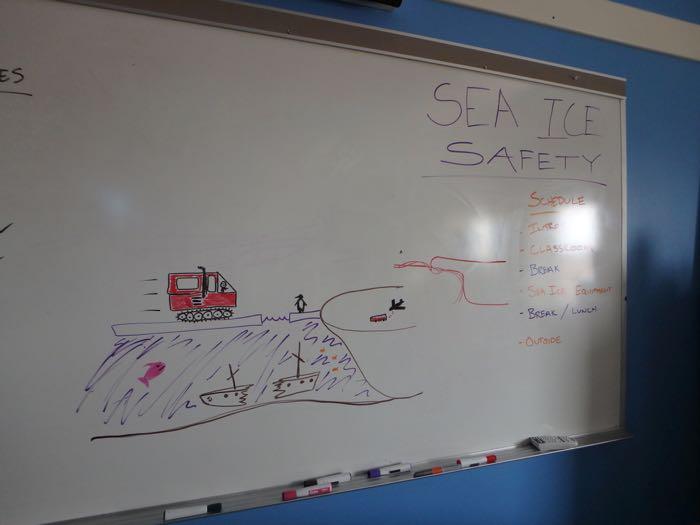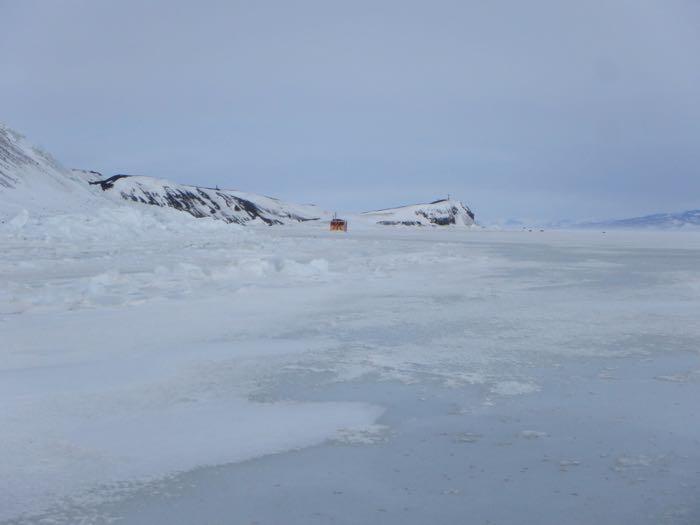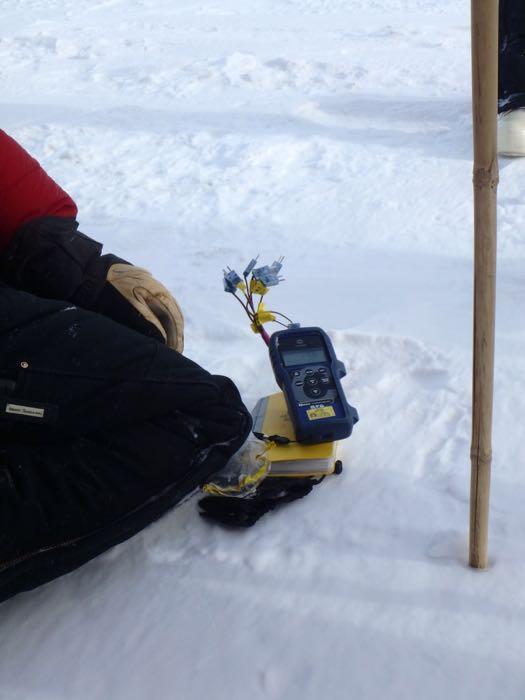"Break on through to the other side" -The Doors
I woke up to another windy day. The night before I put all of the clothes out I would be wearing the next day. "Bring your entire ECW(abbreviation) Extreme Cold Weather clothing kit" was the email I had gotten about my sea ice training today. So, I brought it all...big red parka, snow bib overalls, hat, goggles, neck gaiter (Which is like a warm fleecy wrap around thing that you put over your head and pull down around your neck), liner socks, thicker socks, mittens AND gloves with thin liner gloves under them...I was ready for the cold. When I walked outside the wind was blowing and it was definitely the coldest I'd felt in awhile. Immediately my cheeks started to sting. Today was sea ice training day and what a day to be traveling on the ice!!!!

As I sat at breakfast with one of the Weddell seal teams, which actually includes people who used to work and currently work at The Marine Mammal Center up the hill from where I work at NatureBridge, people were speculating about sea ice training even happening. "It's cold and windy out there. They'll probably cancel it". But they didn't. Instead I joined a group of 9 other people to learn all about sea ice. And it was an AMAZING DAY! It was a cold day, that's true but what I learned was incredible. I think I have fallen in love with sea ice!

Just a few facts about the sea ice I'll be traveling on today:
It's fast ice. As I mentioned yesterday, fast ice is attached to the shore and doesn't float freely. It does, however, move up and down with the tides. We watched a time-lapse film about it and it was fascinating. It looked like the ice was breathing going up and down with the tides! This tidal movement can change the look of the ice from something smooth to a rough looking chunks of ice.

To travel safely across the ice it has to be thick enough. Sea iceThere are terms for different types of ice. Shorefast ice forms along coasts and is attached to land. Pack ice is ice floating in open water. Multiyear ice is ice that has survived at least 1 summer. First year ice is ice that has not yet survived a melting season. forms from the top down as a result of the cold air. This cold air can make the sea ice thicker. Each vehicle here at McMurdo has a different thickness of ice that is required for traveling on the ice. When the ice is good quality, snowmobiles only require a thickness of 13cm while a pisten bully requires a thickness of 30cm and a Hägglund, which I was riding in today, requires a thickness of 38cm. A person only needs a thickness of 9cm of ice for safe walking!
I mentioned quality of ice. As Antarctica moves into summer, sea ice can start to deteriorate and break up. The people in charge of ensuring the ice is safe for travel check the temperature at different depths of the ice to determine the quality of the ice. Good, strong, quality sea ice that is at the peak of strength is called Period 1.

Currently, at McMurdo, we are in Period 1 and the ice is about 131cm thick on average. So, everything looks pretty good for traveling. That said, there are cracks in the ice. These cracks can widen and also narrow and it can happen quickly. So, when coming upon a crack while traveling people must get out of the vehicle and assess the crack to decide if it is safe to cross the crack.
Here's a short video to explain what I learned about assessing the safety of the sea ice:
After my icy adventure I joined some folks on a wander to Scott Base, which is New Zealand's station here in Antarctica. I met some friendly kiwis and admired their nice views of the icy airfield.
Tomorrow I'm off to learn about snow machines and using GPSA Global Positioning System (GPS) is a satellite-based navigation system used to track the location or position of objects on the Earth’s surface..


Comments